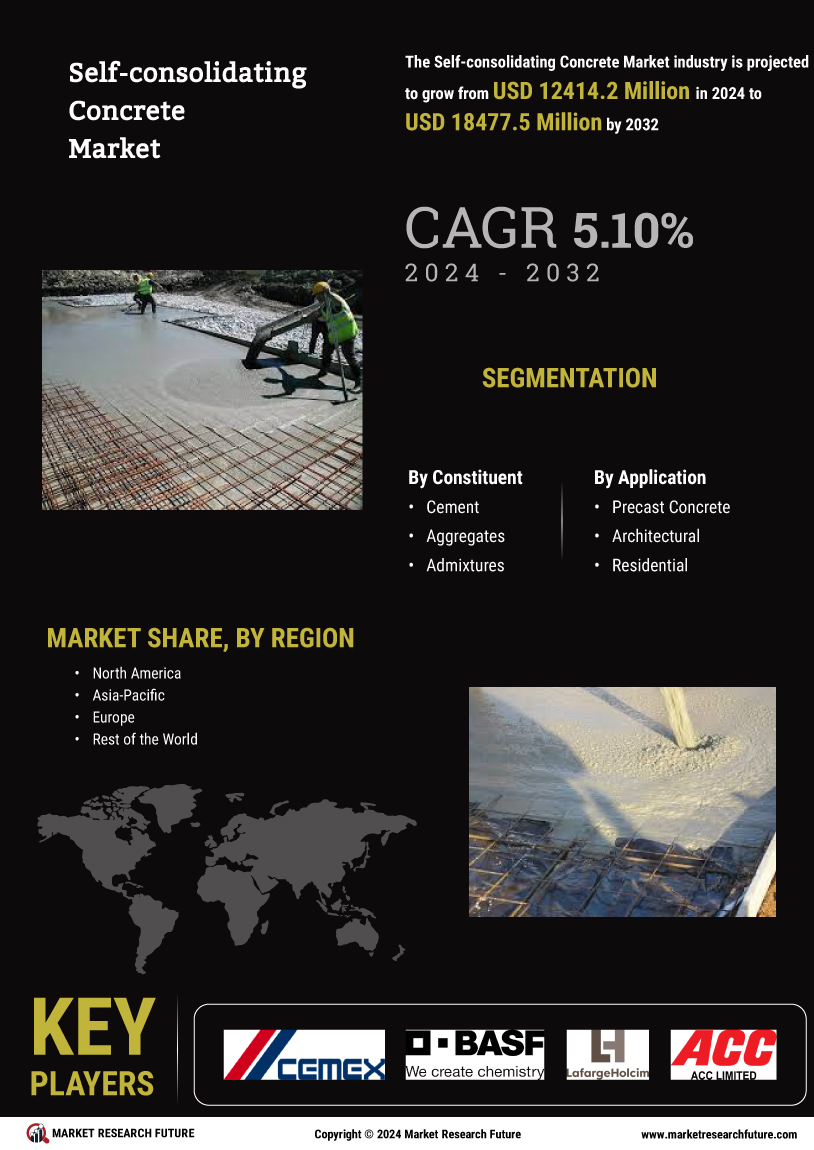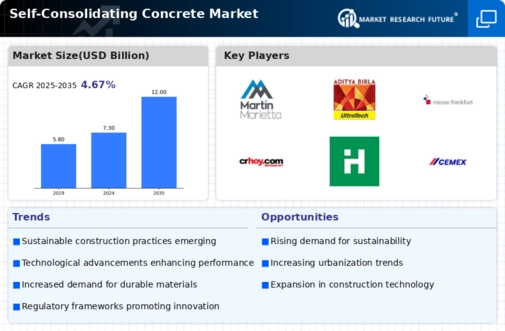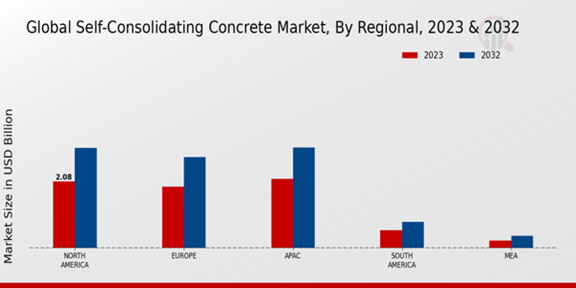Increasing Urbanization
The rapid pace of urbanization globally is a primary driver for the Global Self-Consolidating Concrete Market Industry. As cities expand, the demand for innovative construction materials that facilitate faster and more efficient building processes grows. Self-consolidating concrete, known for its ability to flow and fill forms without mechanical vibration, is particularly advantageous in densely populated urban areas. This trend is expected to contribute to the market's growth, with projections indicating a market value of 7.3 USD Billion in 2024. Urban centers increasingly require materials that enhance construction efficiency while minimizing labor costs, thus driving the adoption of self-consolidating concrete.
Market Growth Projections
The Global Self-Consolidating Concrete Market Industry is projected to experience robust growth over the next decade. With a market value of 7.3 USD Billion anticipated in 2024, the industry is expected to expand significantly, reaching an estimated 12.0 USD Billion by 2035. The compound annual growth rate (CAGR) of 4.66% from 2025 to 2035 indicates a steady increase in demand for self-consolidating concrete. This growth is likely driven by various factors, including urbanization, technological advancements, and sustainability initiatives. The market's expansion reflects the increasing recognition of self-consolidating concrete as a preferred choice for modern construction projects.
Infrastructure Development
The ongoing global infrastructure development projects are a crucial driver for the Global Self-Consolidating Concrete Market Industry. Governments worldwide are investing heavily in infrastructure to support economic growth, which includes roads, bridges, and public buildings. Self-consolidating concrete is particularly suited for these applications due to its ability to achieve high strength and durability while minimizing labor costs. As infrastructure projects continue to expand, the demand for self-consolidating concrete is expected to rise, contributing to the market's growth trajectory. This trend aligns with the broader push for modernization and improved public facilities across various regions.
Sustainability Initiatives
Growing environmental concerns and sustainability initiatives are shaping the Global Self-Consolidating Concrete Market Industry. The construction sector is increasingly focusing on reducing its carbon footprint, and self-consolidating concrete offers a viable solution due to its efficient use of materials and reduced waste generation. Many construction projects are now mandated to adhere to green building standards, which often favor the use of sustainable materials like self-consolidating concrete. This shift towards eco-friendly construction practices is likely to bolster market growth, as more builders and contractors seek to comply with regulations and meet consumer demand for sustainable solutions.
Technological Advancements
Technological innovations in concrete formulation and production processes are significantly influencing the Global Self-Consolidating Concrete Market Industry. Advances in admixture technology and the development of high-performance concrete mixtures have improved the properties of self-consolidating concrete, making it more appealing to construction professionals. These advancements allow for better workability, durability, and sustainability, aligning with modern construction demands. As a result, the market is projected to grow at a CAGR of 4.66% from 2025 to 2035, reaching an estimated value of 12.0 USD Billion by 2035. The continuous evolution of concrete technology is likely to enhance the performance characteristics of self-consolidating concrete, further driving its adoption.
Labor Shortages in Construction
Labor shortages in the construction industry are increasingly influencing the Global Self-Consolidating Concrete Market Industry. The construction sector faces challenges in finding skilled labor, which has led to a growing interest in materials that require less manual intervention. Self-consolidating concrete, which can be placed without the need for extensive vibration or finishing, presents a practical solution to this issue. As construction companies seek to optimize their operations and reduce reliance on skilled labor, the adoption of self-consolidating concrete is likely to increase. This trend may further accelerate market growth as companies adapt to the evolving labor landscape.
























Leave a Comment